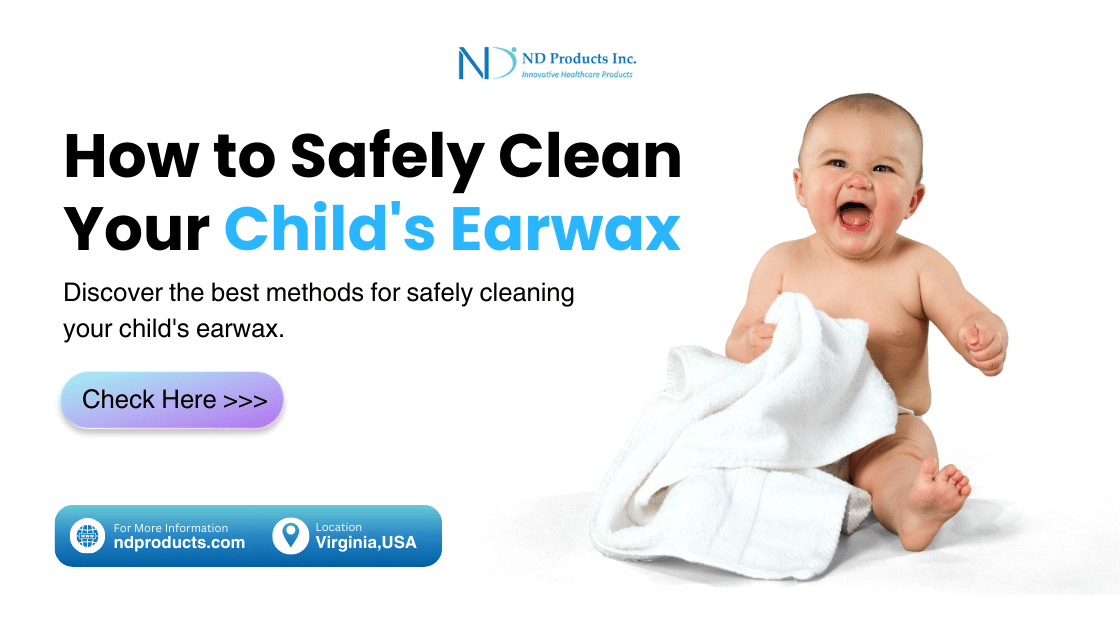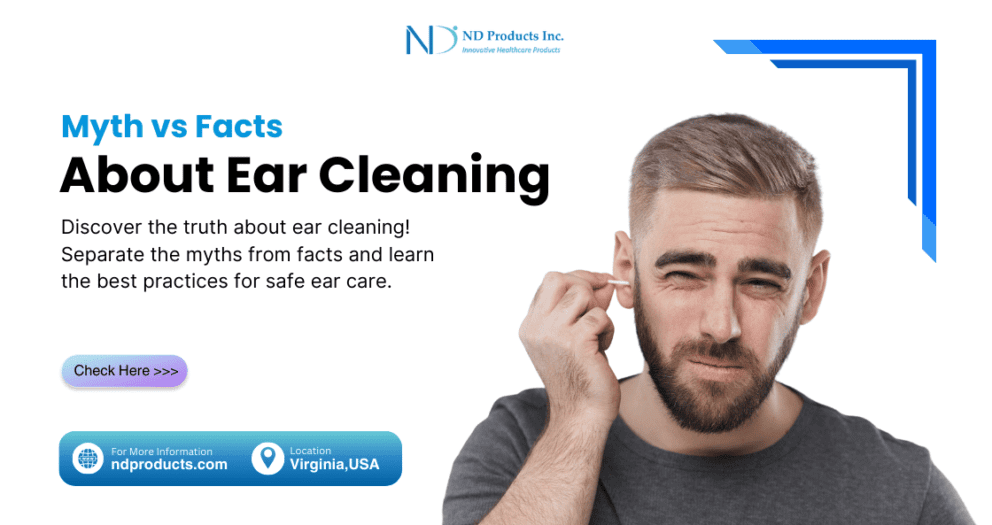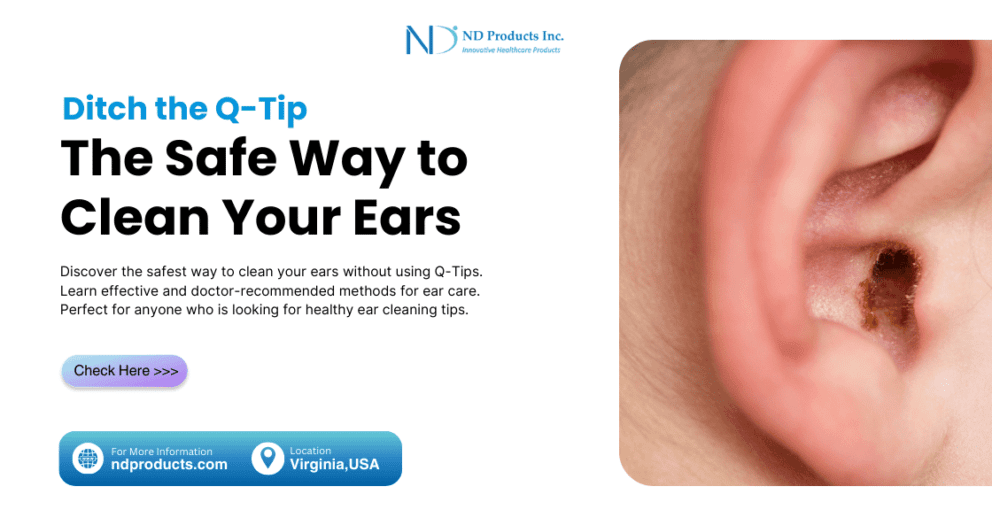Children can also have problems with an accumulation of earwax, much like adults. It is advisable to have this fixed as soon as possible because it can be unpleasant and result in hearing issues.
Cleaning your child’s ears isn’t as simple as it might seem, though. You may worsen issues or possibly cause harm to their ears by cleaning their ears yourself. Therefore, it’s better to consult a qualified expert if you think your child’s ears need cleaning.
What does earwax do?
Even though it might appear like yellow dirt to you, earwax has benefits. This waxy material does two things to help your child’s ears stay healthy.
It’s true that toddler ears can clean themselves. From the ear canal to the visible portion of the ear, earwax gradually drains. In the meantime, fresh wax is continuously produced by the ear glands. Our bodies naturally produce just the appropriate quantity of earwax; however, some individuals produce more than others. Initially, it functions similarly to a liner, shielding the eardrum and canal from germs, water, and bacteria. Secondly, earw ax protects the eardrum from irritation and damage by capturing dust, debris, and other foreign objects that enter the ear canal.
The Importance of Ear Cleaning for Children
In real life, ears clean themselves. Additionally, earwax typically falls out on its own, so removal is not necessary.
Anything put in your child’s ears raises the danger of infection or injury to the eardrum or canal. Regular bathing, with the warm water and steam keeping the ear tissue soft enough to fall out on its own, is usually sufficient to maintain the ear canal or drum in good condition. You therefore typically don’t need to clean your child’s ears very regularly, unless there is a buildup or obstruction.
However, if there is a build-up of wax, it might cause more serious problems for kids. If there is a build-up or obstruction, they could complain that their ears hurt or that something is inside them.
Cotton swabs safe for my child’s ears?
While cotton swabs may seem like a convenient option for removing earwax, they can actually pose risks when used incorrectly. Inserting cotton swabs into the ear canal can push wax deeper, leading to potential blockages or injury to the delicate ear structures. Moreover, excessive cleaning with cotton swabs can strip the ear canal of its natural protective oils, leaving it susceptible to irritation and infection.
Instead of using cotton swabs, consider safer alternatives (ND Products Inc – Ear-O-Care) for maintaining your child’s ear hygiene. Gentle cleaning with a warm washcloth around the outer ear is often sufficient for removing visible wax. If you have concerns about excessive earwax buildup or your child experiences discomfort or hearing issues, consult a healthcare professional for guidance.
Can frequent use of a cotton swab harm the ear?
Over-cleaning your child’s ears can result in dry ears. Other problems like flakiness or itching could result from this. The ear is kept lubricated and moisturized by earwax.
The risk of harming your child’s eardrum or hearing bone, which is located directly beneath the eardrum, increases if you insert the cotton swab too deeply.
Earwax can occasionally become impacted, completely obstructing the ear canal and perhaps impairing your child’s hearing. This may occur from the body producing excessive amounts of earwax or from compressing the earwax inside the ear canal with a Q-tip. A medical professional may be required to remove affected earwax.
Does ear candling help with earwax buildup?
Ear candling is a practice that involves inserting a hollow candle into the ear canal and lighting it, with the belief that it will create a vacuum to remove earwax. However, there is little scientific evidence to support the effectiveness of ear candling for removing earwax or treating any ear-related conditions.
In fact, ear candling can be potentially dangerous and may cause more harm than good. The process can lead to burns, injury to the ear canal, and even earwax being pushed deeper into the ear, exacerbating the buildup.
At ND Products Inc., we prioritize safe and effective ear care practices for you and your family. Instead of relying on unproven methods like ear candling, we offer the Ear-o-care kit, which is safe and doctor-recommended for kids, adults, and seniors. Explore our range of trusted products and resources designed to promote healthy ear hygiene without compromising safety.
How do I know if my child has earwax buildup?
Your child may have an accumulation of earwax if they have been complaining about discomfort in their ears.
Typical signs and symptoms include of:
- Earache.
- loss of hearing.
- It’s burning.
- sensation of fullness or having something lodged in their ear.
- They might also struggle with speech or focus.
How to not clean your earwax?
Avoiding potentially dangerous procedures, such as using ear candles, is important when it comes to cleaning your ears. Studies have demonstrated that ear candles are not only ineffective but also cause harm, despite claims to the contrary.
Ear candles are hollow candles designed to be inserted into the ear canal and lit at the exposed end, with the belief that they create a vacuum to remove earwax. However, the Food and Drug Administration (FDA) has warned against their use due to the risks they pose.
Research has found that ear candles can cause burns to the skin around the ear and even pierce the inside of the ear, leading to serious injury. Therefore, it’s best to avoid using ear candles and opt for safer alternatives for ear cleaning.
Tips for Preventing Earwax Buildup in Children
If you notice earwax in your toddler’s ears, don’t be too concerned. That simply indicates that everything is operating as it should. When it comes time for bath time, all your toddler needs to do is give those adorable little ears a quick swipe with a cloth.
Use these tips to assist you maintain the best possible condition for those ears:
- Regular Ear Hygiene: Gently clean the outer ear with a damp washcloth during your toddler’s bath time to remove any visible dirt or wax.
- Avoid Cotton Swabs: Refrain from using cotton swabs or any other small objects to clean inside your toddler’s ears, as they can push wax deeper into the ear canal.
- Limit Ear Canal Exposure: Encourage your toddler to avoid inserting fingers, toys, or other objects into their ears, as this can disrupt the natural wax migration process and lead to buildup.
- Monitor Water Exposure: When bathing or swimming, take care to prevent water from entering your toddler’s ears, as excessive moisture can soften earwax and contribute to buildup.
Seek Professional Guidance: If you notice excessive earwax buildup or if your toddler experiences ear discomfort or hearing difficulties, consult a pediatrician or ENT specialist for evaluation and appropriate management.
Conclusion
Normally, our ears only create the minimum amount of wax required to keep them clean, but sometimes, children’s earwax can accumulate excessively. Wax and other debris can be removed from the outer ear by wiping it with a warm, moist cloth, but cleaning your child’s ear canal should only be done under the supervision of your doctor or medical professional. Never put cotton buds in your child’s or your own ears, since this could harm their sensitive ears and result in further issues.
For assistance in eliminating extra wax, contact ND Products Inc. for our gentle ear wax remover kit at home.





